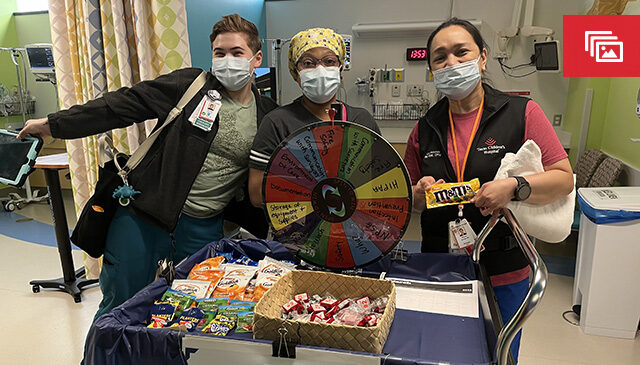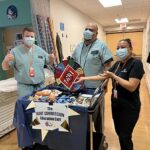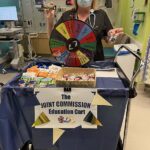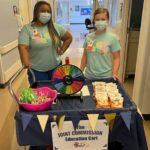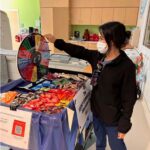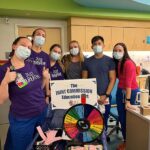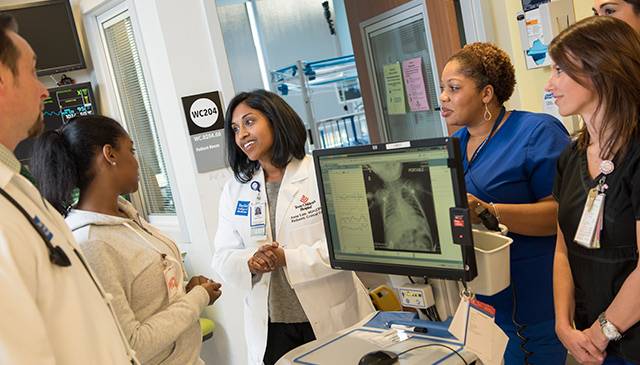May 27, 2014

Texas Children’s recently received an impressive report card from The Joint Commission with surveyors commending the hospital for demonstrating several best practices.
“Our survey results are a great indication that we are meeting the expectation of quality care for our patients,” said Texas Children’s President and CEO Mark A. Wallace. “This should only propel us to continue our focus on providing safe, quality care every single day for every one of our patients.”
Every three years, Texas Children’s undergoes an accreditation process by The Joint Commission survey team to ensure our delivery of high-quality patient care. Five surveyors arrived at Texas Children’s for a five-day survey on May 12. The survey team included a pediatrician for inpatient areas and the medical staff, and another pediatrician for ambulatory areas, an Ob/Gyn specialized nurse, pediatric nurse and a life safety engineer.
What Joint Commission noted
The survey is intended to assess the organization’s compliance in patient care areas that contribute to positive outcomes and to measure and improve performance. The Joint Commission team was very impressed with our improved outcomes in asthma, diabetes, radiology efficiency and flow, patient flow and surgical complications. The team also identified several best practices observed during the survey, including:
- Time out processes across the system
- Error prevention technology in the anesthesia ad pharmacy areas
- Use of data to improve patient outcomes
“The Joint Commission survey team visited several Texas Children’s facilities to evaluate patient care processes through on-site observations, interviews and tracer methodology,” said Mary Jo Andre, Texas Children’s senior vice president of Quality and Safety. “Surveyors use tracer methodology to retrace the specific care processes that a patient experienced by observing and talking to staff in areas where the child received care.
“The surveyors were very impressed with the knowledge and confidence of the staff and faculty who participated in the tracer interviews. They complimented them also on their ability to navigate Epic and explain the continuum of care. Most importantly they were impressed with their ability to talk about quality projects and outcomes. We are very proud of their performance.”
How we prepared for the survey
Preparing for regulatory surveys is an ongoing process underscored by Texas Children’s daily focus on patient safety and high quality programs. About six months before our anticipated Joint Commission survey, Texas Children’s hires a consultant to review our processes and evaluate our survey readiness. The information provided by the consultant helps the organization fine tune.
“The results we get from area tracers during that preparation process provide information we need to develop and implement an organization-wide readiness education program,” said Trudy Leidich, Texas Children’s director of Quality and Safety and Medical Staff Services. “But we regularly evaluate our internal processes against regulatory guidelines to identify opportunities for improvement. Regulatory surveys are valuable evaluation tools, but we have a deliberate focus on the quality and safety of our patients’ care every day.”
An independent, not-for-profit organization, The Joint Commission accredits and certifies more than 20,500 healthcare organizations and programs in the United States. Approximately 77 percent of the nation’s hospitals are accredited by The Joint Commission. Accreditation surveys are unannounced, so preparation is a crucial, on-going process.
“Accreditation by The Joint Commission means Texas Children’s meets the highest quality and safety standards in patient care,” Wallace said. “It gives patients peace of mind knowing that our facilities are surveyed routinely and that we meet or exceed a comprehensive assessment of the care we provide.”
